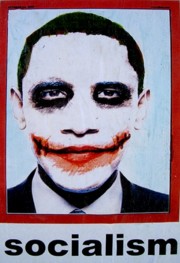Inequality is less than it seems
POPULISTS and professors rarely see eye to eye. But on at least one fact of economic life, they agree: wage inequality has increased in America since the mid-1980s. Many studies outline the same broad shifts. Workers at the bottom of the wage scale have seen their incomes fall relative to those at the top. Within the top decile, the super-rich have left the merely well-off far behind.
Indeed increases in national income this decade have been so skewed towards the rich that, allowing for headline inflation, the spending power of a large chunk of the population has apparently stagnated or even declined. Yet this finding is at odds with the impression of spreading prosperity. Increasing numbers of Americans watch DVDs, rely on dishwashers, enjoy air-conditioning and display other signs of increased material wealth. Are the poor really falling so far behind?
A challenge to the conventional wisdom is set out in a recent research paper by Christian Broda and John Romalis, both of the University of Chicago's business school. They argue that standard measures of inequality do not reflect differences in the way that the rich and poor spend their money. A person's demand for a particular good or service does not rise in exact proportion to his income. As he grows richer, the pattern of his spending changes, as well as the amount. In particular, high-wage households spend a greater share of their income on services and a smaller share on "non-durable" items, such as food, clothing, footwear and toiletries.
For most of the past three decades, the price of non-durable goods has been falling relative to the price of the services-investment advice, personal care, domestic help and so on-that the rich spend more of their money on. If these differences between the inflation rates faced by the rich and the poor are taken into account, the rise in inequality is reduced and may even vanish.
To back these claims up, the authors constructed price indices for 12 income groups, using official figures and detailed private information on the spending habits of different households. This data set, created by shoppers themselves using in-store scanners, records the type of goods bought by various income groups between 1994 and 2005, as well as the prices paid for them.
The Chicago economists found that the share of non-durable spending for the very poorest households was 12 percentage points higher than for the richest households. Because the price of services rose by more than the price of goods during this period, the inflation rate for the rich was far higher than that for the poor. Rich households also buy dearer versions of the same goods than poor consumers. For each product category-a 16-ounce carton of milk, say-well-off households paid an average of 25% more than poor households. This is not because the rich are gullible shoppers but rather, say the authors, because they tend to buy goods of better quality (such as organic milk), the prices of which are higher and tend to rise more quickly.
These differences matter when considering inequality. One standard measure compares the income of a household just below the top 10% of earners with one just above the bottom 10%. The richer household earned 10.6 times more than the poorer one in 1994; that multiple rose to 11.2 in 2005. But according to the authors, this ratio exaggerates how far the poor have been left behind because it does not account for different inflation rates. A fuller picture would consider shifts in relative prices as well as in relative incomes.
Mr Broda and Mr Romalis reckon that around two-thirds of the increase in the standard inequality gauge since 1994 is offset by the poor's lower inflation rate. They find a similar result when they extend their analysis on spending patterns to price and income figures dating back to 1984. That is not all. Their data on shopping habits show that the range of goods consumed by poor households increased by far more than for rich households. The benefit of this extra variety is not captured in income or inflation, but it can be quantified. If that gain is expressed as an addition to real income, the remaining increase in inequality vanishes.
More here
***********************
BrookesNews Update
Obama and his fellow Democrats adopt Hoovernomics: The Democrats are now promoting Hoovernomics presented by the economically illiterate Obama as the only way to create growth.. The brilliant Obama and his fellow imbeciles in Congress have declared that increased government spending and a massive tax rise is just what America needs
The humble light bulb: a victim of political stupidity and green zealotry: Irrespective of what smart-aleck journalists and Malcolm Turnbull think Joe Public is being perfectly rational in choosing the incandescent bulb over the new wonder light. What's more, he might not like mercury-laden lamps
Obama's tax plans will be "lethal" to the economy: Columbia University economist Robert Mundell warned Americans that Obama's proposed massive tax hike could send the US economy spinning into a deep recession
Democrats v. Arctic abundance: America is sitting on over 1,000 billion barrels of oil. Americans who feel squeezed by higher oil prices should know they have a stark choice: More oil and lower prices, or less oil and higher prices. And they should also know who's to blame for this energy mess: the Democrat-led Congress
Obama and the media: In election coverage, 'sizzle' outweighs fairness: The spectacle of the New York Times rejecting McCain's op-ed on the utterly stupid grounds that it does not 'mirror' Obama's vies on Iraq did a fantastic job of getting it across to the public that the media are dominated by politically bigoted leftwing liars
Oil production: Earth to Nancy Pelosi: How does one deal with Nancy Pelosi's idiocy and economic illiteracy? This is the same woman who says increasing domestic oil production will have no effect on prices. She also says that Bush should act on oil prices by releasing the country's oil reserve of 700 million barrels. It is not Bush who embarrasses the US but idiotic Dems like Pelosi
Obama as a false prophet: It is Obama' clarity of vision that makes him so attractive to his supporters. But it is also the source of the greatest danger to his policies. What happens if Obama says, 'Yes we can' and reality says, 'No you can't'? What happens if the hedgehog meets the Black Swan?
For more postings from me, see OBAMA WATCH, TONGUE-TIED, EDUCATION WATCH INTERNATIONAL, GREENIE WATCH, POLITICAL CORRECTNESS WATCH, GUN WATCH, SOCIALIZED MEDICINE, FOOD & HEALTH SKEPTIC, AUSTRALIAN POLITICS, IMMIGRATION WATCH INTERNATIONAL, EYE ON BRITAIN and Paralipomena
List of backup or "mirror" sites here or here -- for readers in China or for everyone when blogspot is "down" or failing to update. Email me here (Hotmail address). My Home Pages are here or here or here
****************************
The Big Lie of the late 20th century was that Nazism was Rightist. It was in fact typical of the Leftism of its day. It was only to the Right of Stalin's Communism. The very word "Nazi" is a German abbreviation for "National Socialist" (Nationalsozialist) and the full name of Hitler's political party (translated) was "The National Socialist German Workers' Party" (In German: Nationalsozialistische Deutsche Arbeiterpartei)
****************************
Thursday, July 31, 2008
Subscribe to:
Post Comments (Atom)
 It's the shared hatred of the rest of us that unites Islamists and the Left.
It's the shared hatred of the rest of us that unites Islamists and the Left.
 Eugenio Pacelli, a righteous Gentile, a true man of God and a brilliant Pope
Eugenio Pacelli, a righteous Gentile, a true man of God and a brilliant Pope

No comments:
Post a Comment